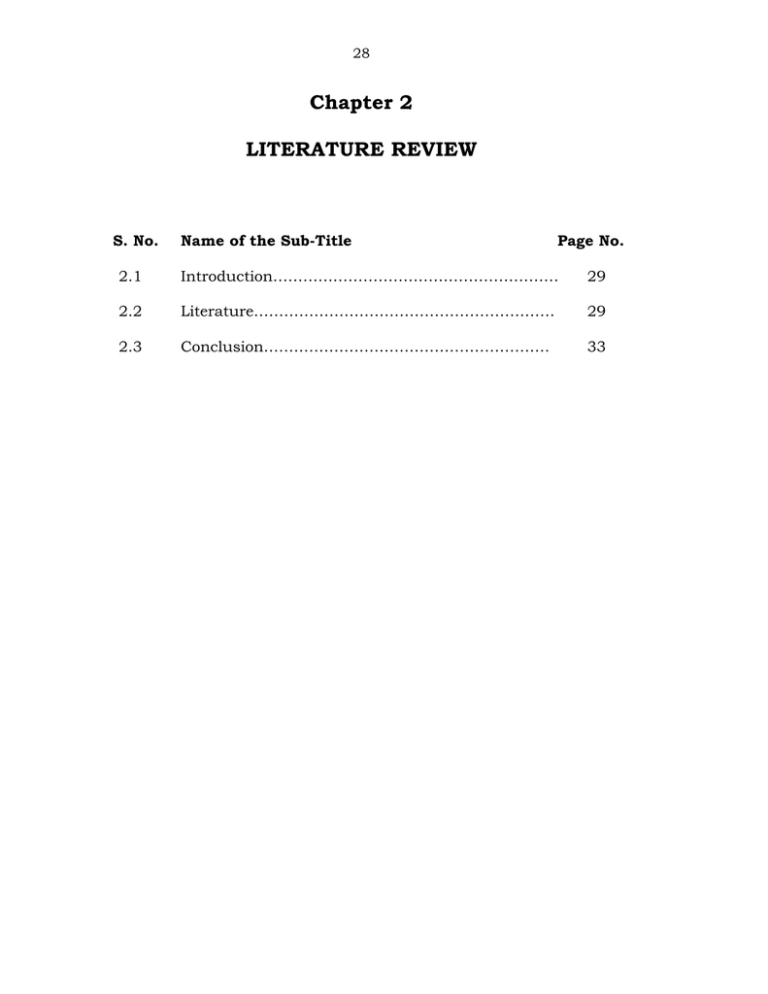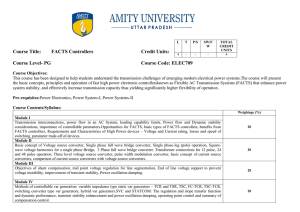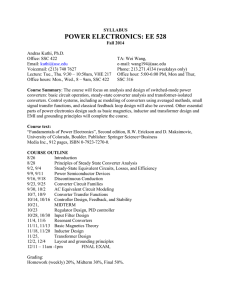09_chapter 2
advertisement

28 Chapter 2 LITERATURE REVIEW S. No. Name of the Sub-Title Page No. 2.1 Introduction………………………………………………… 29 2.2 Literature…………………………………………………… 29 2.3 Conclusion………………………………………………… 33 29 2.1 Introduction This chapter deals with the literature reviewed for different types of resonant converters, active clamp circuits, voltage doubler circuits, analog controller and fuzzy controllers with their power levels. The state of art technologies in these areas is dealt in detail. 2.2 Literature Switched mode Pulse Width Modulation technique based DC-DC converters have become an essential element of many commercial, military, communication, automobile, computer and space applications [1]-[3]. Barbie.et.al [4]-[5], Lee.et.al [6]-[7] introduced Quasi-resonant converters to overwhelm the losses due to hard switching [8]–[9]. ZVS was better suited over ZCS for many DC–DC converters as reported in literature [10]–[29]. Of all the isolated DC-DC converter topologies, flyback topology and push-pull topologies are the best chosen configurations for low and medium power applications due to benefits of high efficiency and less component cost [30] – [66]. Wang.et.al [19], [62], [63] proposed a new topology by adding an auxiliary switch, a small capacitor and an inductor to the conventional flyback converter. Additional active or passive clamp circuit is not required to suppress voltage stress on the switching devices, which is 30 often found in classical converters. This topology also claims soft switching of all devices in the converters. A novel high efficiency push-pull topology that is capable of operating with lossless switching through a very wide load range is presented by Weinberg [13], [14], [17]. When generating high-voltages, some problem that occurred in the past, such as, the parasitic diode’s reverse recovery problem, transformer leakage due to separation from primary to secondary, winding capacitance due to the large number of turns per layer resulting in high frequency EMI and large switching losses are eliminated by the resonant tuned circuits in the proposed converter, leading to miniaturization and higher efficiencies. A current-fed push–pull converter for high output voltage applications supplied by low-voltage solar cells [66] conserves inherent advantages of a conventional current-fed push–pull converter such as low input current stress and high-voltage conversion ratio. The voltagedoubler rectifier employed reduces the reverse recovery loss of rectifying diodes and flux imbalance. A current-fed full bridge boost DC–DC converter with zero-current switching (ZCS) topology utilizes the leakage inductance and parasitic capacitance of the high-voltage transformer to achieve ZCS operation. The steady-state analysis and the ZCS operation conditions under various load and input voltage conditions are highlighted by Chen.et.al [27]. At high-voltage, voltage fed converters demand bulky inductors 31 which also increase the cost factor. Therefore, current-fed converters are widely applied in high voltage applications because they need no output inductor and have no flux-imbalance problems. Yungtaek.et.al proposed an interleaved boost PFC converter with voltage-doubler which does not require any range-select switches and can regulate the output voltage at around 400V in the entire universalrange line voltage [67]. The voltage stress across the switch in the resonant flyback and push-pull converter is too high when compared with ZCS converters. To overcome these shortcomings an active clamp flyback converter was proposed by Huang [62], Woo [66], Brain [68], Bor-ren [69], Alou [70] and Watson [71]-[72]. Introducing active-clamp circuitry into the flyback topology serves to recycle transformer leakage energy while minimizing switch voltage stress [68]–[81]. Further, a high-efficiency high step-up DC-DC converter consisting of an input-current doubler and an output-voltage doubler is reported in [73]. Active-clamp DC-DC converter has low primary side conduction loss, since the current doubler divides the input current between two inductors, thereby reducing the primary current of the transformer. Multi-output switching power converter is widely used in various sectors in the industry. Multi-output converters are more compact and less expensive than a collection of single output converters [30]–[53]. Multiple secondary windings are added to the high frequency transformer 32 (HFT) for obtaining multiple output DC voltages with isolation. These windings are used for obtaining different power levels required in personal computers (PCs) and other communication systems. The regulation of the same could be easily achieved with analog controllers [82]–[84]. High speed controller is used to provide switching pulses to the MOSFET. UC 3825 family of PWM control IC, optimized for high frequency switched mode power supply applications, is selected as high speed PWM IC [85]. However, one of the major drawback of multi-output topology is poor regulation, which can be overcome by using one of the post regulators like linear regulator, magamp post regulator, MOSFET synchronous switch post regulator, step down buck regulator and low drop out post regulator. Low drop out post regulator (UC3834) is intended to provide complete linear regulation system at less power. Many additional features such as error amplifier, over current protection unit, etc. are included on the IC which eliminates the need for additional circuit elements [86]. Performance of the power supplies rely on the output voltage regulation for line and load variations. To improve the performance of the converter as well as the regulation and the speed of response, closed loop operation is a must. For which many controllers are reported in the past such as Proportional Integral and Derivative (PID) controller, Sliding Mode Controller (SMC), Fuzzy Logic Controller (FLC) and Neural Network 33 Controller (NNC) [87]-[93]. For linear systems PID controllers are implemented. These controllers are not suitable for complex and nonlinear converters like resonant and active clamp. This necessitates the use of nonlinear controllers like FLC and NNC. The conventional fuzzy controllers take error and change in error as input signals and produce an output corresponding to the rules in the fuzzy controller. It is often reported that these fuzzy rules have skew symmetry over the diagonal; hence the conventional fuzzy controller is replaced by Single input Fuzzy Logic Controller (SFLC) as reported by Arulselvi.et.al [87]–[88]. Henceforth, to reduce the memory space occupied and to increase the speed of response of the controller SFLC is proposed as the digital controller for the converters designed. The design aspect of the converters (Push-pull and flyback) [94]– [100], considered for the research and the analysis of the same in terms of efficiency [103], regulation, voltage stress and current stress are further dealt in the forthcoming chapters. 2.3 CONCLUSION The vast literatures reviewed are presented. From the review it is concluded that push-pull and flyback converters have better efficiency, and are cost effective for low and medium power applications. The advancement in resonant converters is listed along with their advantages. From the literatures it is concluded that the active clamp circuits reduce the voltage stress in ZV switches, Voltage doublers reduce 34 the voltage stress in diodes and also increases the voltage conversion ratio. The subsequent chapters deal with the combined effect of active clamp circuit and voltage doubler in improving the overall efficiency of the push-pull and flyback converters for low power applications (less than 100W). The importance of non-linear controllers for the resonant flyback and push-pull converters are also justified.





